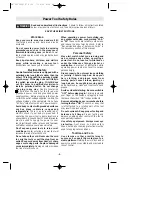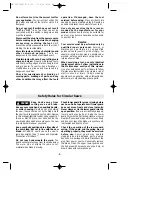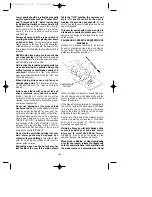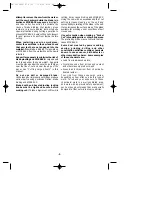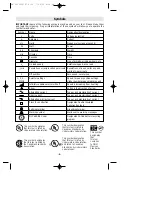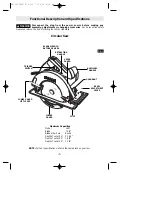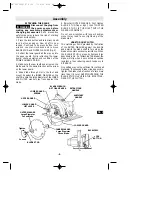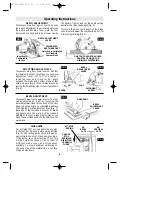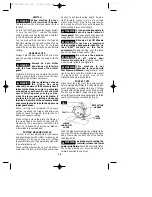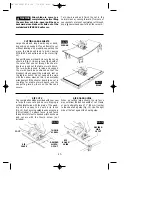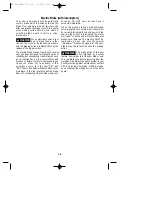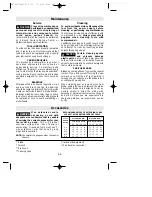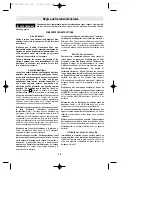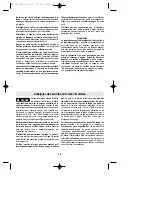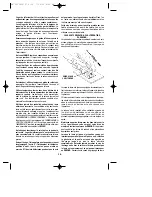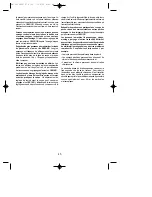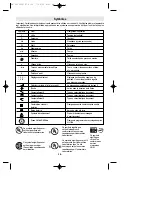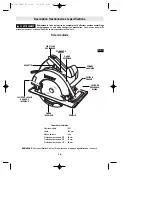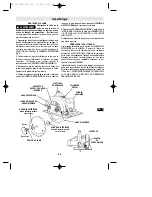
attempt to remove the saw from the work or
pull the saw backward while the blade is in
motion or KICKBACK may occur. Investigate
and take corrective action to eliminate the
cause of blade binding. Wet lumber, green
lumber or pressure treated lumber require
special attention during cutting operation to
prevent KICKBACK. Avoid cutting nails. Inspect
for and remove all nails from lumber before
cutting.
When restarting a saw in a workpiece,
center the saw blade in the kerf and check
that saw teeth are not engaged into the
material. If saw blade is binding, it may walk up
or KICKBACK from the workpiece as the saw is
restarted.
Support large panels to minimize the risk of
blade pinching and KICKBACK. Large panels
tend to sag under their own weight. Supports
must be placed under the panel on both sides,
near the line of cut and near the edge of the
panel. See “Cutting Large Sheets” in this
manual.
Do not use dull or damaged blade.
Unsharpened or improperly set blades produce
narrow kerf causing excessive friction, blade
binding and KICKBACK.
Blade depth and bevel adjusting locking
knobs must be tight and secure before
making cut. If blade adjustment shifts while
cutting, it may cause binding and KICKBACK.
Using the saw with an excessive depth of cut
setting increases loading on the unit and
susceptibility to twisting of the blade in the kerf.
It also increases the surface area of the blade
available for pinching under conditions of kerf
close down.
Use extra caution when making a “Pocket
Cut” into existing walls or other blind areas.
The protruding blade may cut objects that can
cause KICKBACK.
Some dust created by power sanding,
sawing, grinding, drilling, and other
construction activities contains chemicals
known to cause cancer, birth defects or
other reproductive harm. Some examples
of these chemicals are:
• Lead from lead-based paints,
• Crystalline silica from bricks and cement
and other masonry products, and
• Arsenic and chromium from chemically-
treated lumber.
Your risk from these exposures varies,
depending on how often you do this type of
work. To reduce your exposure to these
chemicals: work in a well ventilated area,
and work with approved safety equipment,
such as those dust masks that are specially
designed to filter out microscopic particles.
-5-
BM 2610909797 6/00 7/14/00 8:39 AM Page 5
Содержание 1657
Страница 38: ... 38 BM 2610909797 6 00 7 14 00 8 41 AM Page 38 ...
Страница 39: ... 39 BM 2610909797 6 00 7 14 00 8 41 AM Page 39 ...


